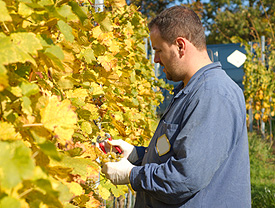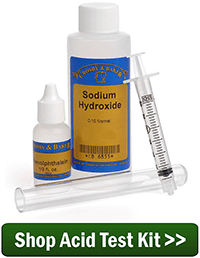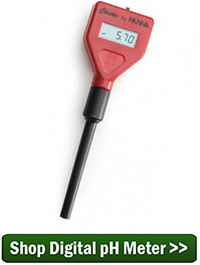 This is part 3 of a 4 part series about when to pick your grapes. Part 1 went over the importance of knowing when to harvest. Part 2 covered how to take the readings from the grapes and what they mean.
This is part 3 of a 4 part series about when to pick your grapes. Part 1 went over the importance of knowing when to harvest. Part 2 covered how to take the readings from the grapes and what they mean.
Ideal Readings
Here’s a quick run-down of what would be optimum readings you would want from the grapes for producing most wines. As an amateur vintner these are the numbers you should be striving to achieve.
The refractometers sugar reading should be around 20 to 26 Brix. This will potentially produce a wine between 10% to 13% alcohol. White wines should lean more towards the 20-22 Brix range, whereas Reds should be closer to 24 to 26 Brix. Red’s have more flavor, so they can handle more alcohol and still stay in balance.
As for pH readings with a digital pH meter, you would like your whites wines to reach 3.2 to 3.3. Remember the scale is reverse. You’ll be starting out earlier in the year around 2.8. You would like Red wines to be somewhere around 3.4 to 3.5. From a preservation standpoint, Reds don’t need to be as acidic as Whites because they have more alcohol to ward off any microbial growth.
 Titratable acidity (TA) readings, as measured by a titration kit, should be .65% to .75% for white wines and .60% to .70% for reds. Again, the difference in these two is stated in the reason above.
Titratable acidity (TA) readings, as measured by a titration kit, should be .65% to .75% for white wines and .60% to .70% for reds. Again, the difference in these two is stated in the reason above.
The Reality Of Readings
The above readings would be great if you could attain each of them every year, but the reality is that in most parts of the U.S. hitting all these numbers in the same year is a struggle. You can plant in good soil and cultivate with care, but all that can be for not if the climate does not cooperate.
In cooler climates the refractometers reading quite often never reaches the appropriate range before the weather becomes too cool. In other areas pH may become to high before the refractometers readings can become adequate. Or, it may rain too much right before harvest, causing the grapes to plump up too much. This can dilute the sugar, acid and flavor to disastrous levels.
It’s only in regions where temperatures are moderate enough to provide a long growing season with moderate rain that grape growers have very little problems achieving these numbers. Such is the case of the inner valleys of California: Napa, Sonoma, etc. These areas benefit from the even, Mediterranean climate that the Pacific winds provide.
For other regions it is usually a compromise to get these three numbers into alignment. And, that is what we will discuss in the next part of this series.
Read More >>
Part I: The Importance Of Timing
Part II: Taking Reading
Part III: What Readings To Expect
Part IV: The Big Compromise
—–
Ed Kraus is a 3rd generation home brewer/winemaker and has been an owner of E. C. Kraus since 1999. He has been helping individuals make better wine and beer for over 25 years.

If you filter wines – when should you add sorbate – before or after final filter .
Greg, I would add the potassium sorbate after filtering your wine.